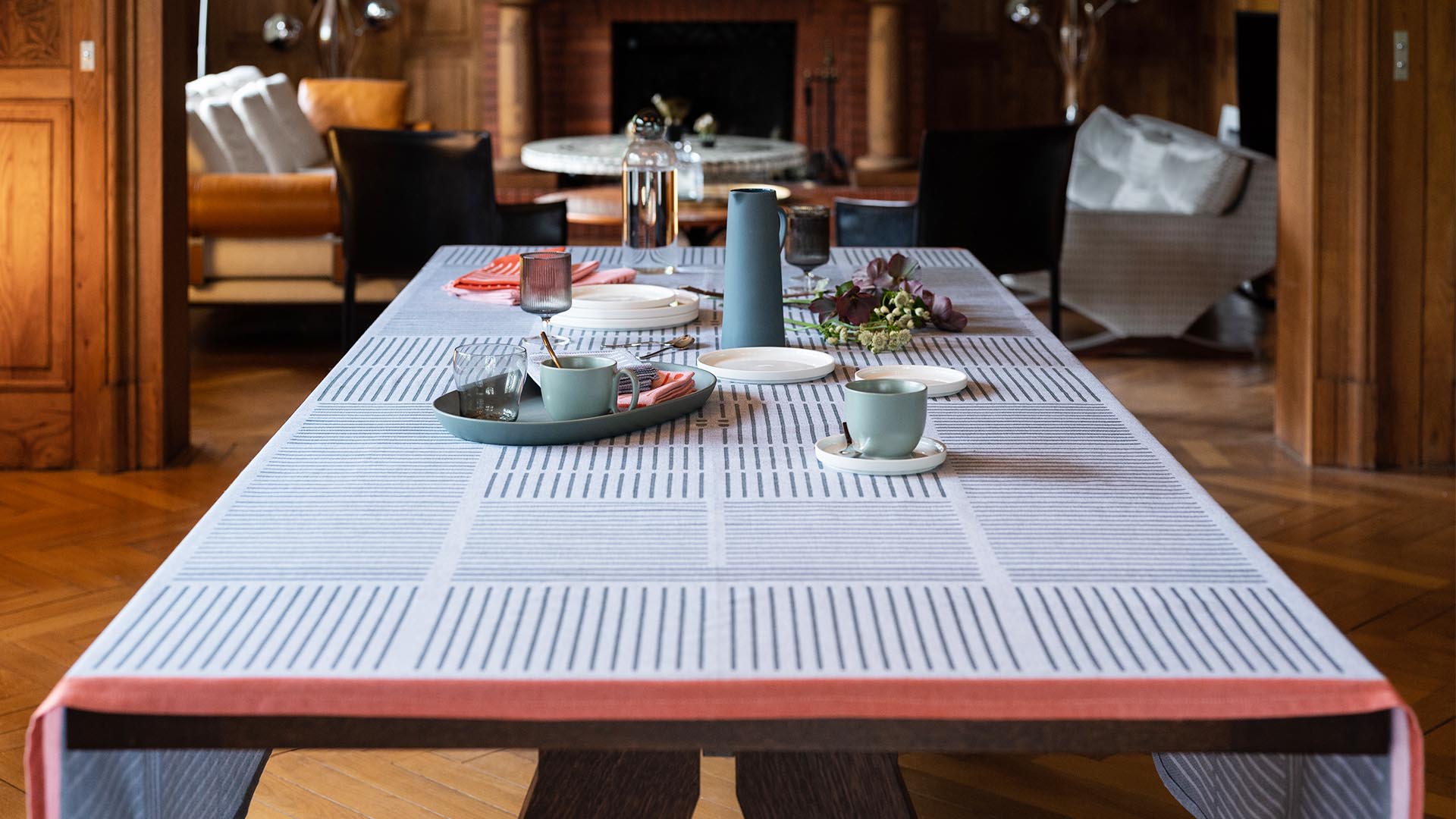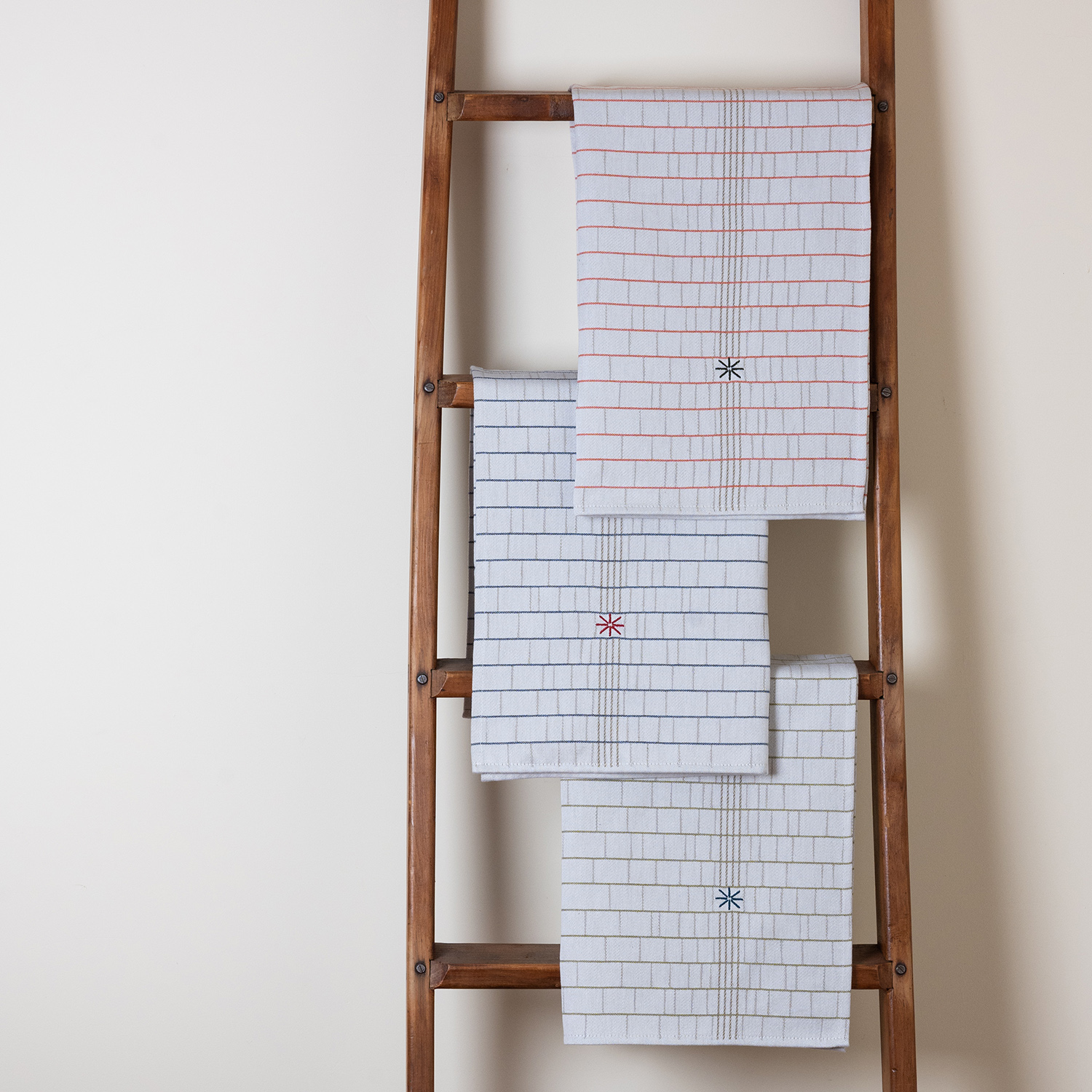FREE DELIVERY IN FRANCE WITHOUT MINIMUM AMOUNT WITH THE CODE MOUTET24 AND EUROPE FROM 100 € PURCHASE
FREE DELIVERY IN FRANCE WITHOUT MINIMUM AMOUNT WITH THE CODE MOUTET24 AND EUROPE FROM 100 € PURCHASE

An homage drawn from the foundations of Basque culture.
In keeping with his family name, which hails from the Souletine Valley of Sainte-Engrace, Samuel Accoceberry likes to highlight the symbols that chime with his intimate family and cultural connections to the Basque country.
He has built the Etxe collection (pron. Etchay) specially for Moutet textiles. Etxe means ‘house’ in the Euskara, the Basque language and denotes the historical nucleus of society in the Basque country. The word refers to all the furniture, the livestock, the fields, the forests and, of course, all the family members sharing the same roof and deriving from it their place in society, in the village and in the country.

This collection conveys the harmonious beauty of the facades of the Basque country. Their brilliant white contrasting with their patterned timbers, shutters and the occasional string of chili peppers hung out to dry slowly in the Basque air.
“One of the traditional patterns found in Basque household linen, comprising 7 stripes representing the 7 provinces of the Basque country. The designer explains “I took zapiak bat, the 7 that make but one and I multiplied them like so many individual bloodlines – 70, 7000, 700000, maybe even 7 million beings; all woven together by the fibers of this one sense of belonging to this special place.
Walls in the Basque country are always impressive. Strong and thick, providing eternal protection to the generations passing them by, shielding them from the wintry mountain weather that is never far away, and keeping them pleasantly cool in summer.

A stone, planted in a green pasture, sealed in a wall, graven, a boundary marker for a territory, a place or an affirmation of property, of belonging, as recalled forcefully by the expression Gure Etchea, meaning our place, our house, our territory, which you can read into the letters spread across this cloth.
The lintel of the Etxe, the Basque house, is a talkative soul, even if those who live behind it are reputed to be somewhat reserved. It tells us a lot. The names of the owners and of the artisans who built the house. Sometimes even religious or political messages, sayings, words of advice, or simply of welcome. Samuel Accoceberry pays homage to these lintels, laying his own stone on this edifice through his free and figurative interpretation.